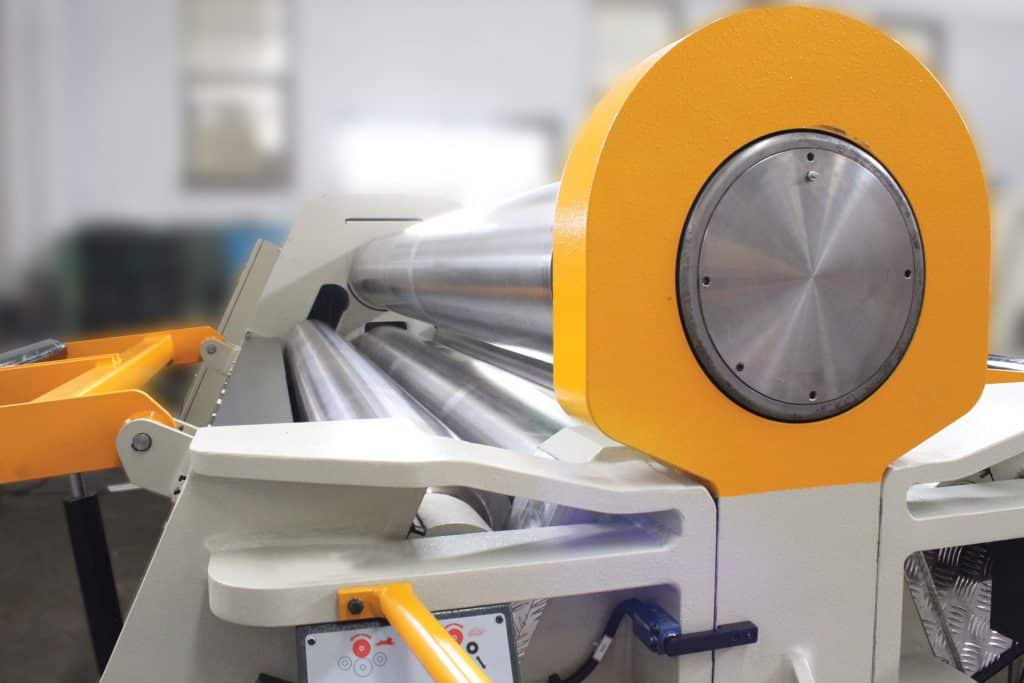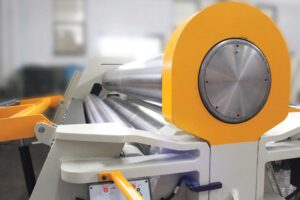When it comes to sheet bending, you need a machine that creates a quality, consistent product. But with such a vast array of bending rolls types it can be difficult to know where to begin to discover the best machine for your particular needs.
Here are six criteria you should consider which will help guide you in finding a machine to fit your bending application needs:
- What does the machine need to be able to achieve? – The most important thing to factor in, is to be realistic. Base your requirements on your day to day needs not necessarily your future needs.
- What is the width of the plate you want to roll? – The machine rolling width capacity is very important. Rolling machines are available in a range of widths but consider a machine with a width capacity that would suit 80% of your production. The wider you go in capacity the larger the top will be. Therefore, increasing the minimum bending diameter.
- What is the thickness of the plate/material you want to roll? – It is important to consider but also remaining realistic on the maximum thickness of plate required. If you are unrealistic in your selection of sheet thickness you may end up with machine that is too large for your core production as this would also affect you’re your minimum bending diameter capacity and rolling quality on thinner material.
- What is the grade/quality of plate/material you want to roll? – Most company capacity charts relate to mild steel rolling/bending specifications. Generally, when rolling stainless steel, you should deduct a third off the capacity but increase the capacity by a fourth when rolling aluminum. The grade of material will also dictate roll crowning. Stainless steel needs more crowning than mild steel whereas aluminum requires zero crowning. The crowning prevents the barrel effect when rolling a cylinder.
- What is the minimum bending diameter you require? – The minimum bending diameter required can be the key factor when choosing a sheet bending rolls. As a rule of thumb the minimum bending diameter on a sheet rolls are calculated by the top roll diameter x 1.5. Some CNC machines have the capability of rolling down to 1.2 x top roll diameters. In a situation where a small diameter is required it will influence on the material thickness and plate width capability.
- What is the production quantity you require? – Assessing your production quantities will lead you down three avenues. One, if your quantities are low and generally one off’s a manual or electric sheet bending rolls may be your best option. If medium to large production required an electric or hydraulic sheet bending rolls with a digital display for roll positions could help speed up your production. For shaped productions and large-scale productions NC or CNC options would be beneficial.
Optional extras are something else to consider. For example, some machines provide instant pre-bending, and some work to achieve a particular diameter. You may need to roll cones for example and some devices will roll a conical shape, which is standard on some machines but optional on others. Lateral material supports, overhead supports and side supports are also optional. There is a plethora of variations available.
At Selmach we have a vast range of plate rolling machines on offer. So, whether you need a small set of manual rolls to produce a small cylinder or you’re regularly processing heavy plate material, use these criteria to decide on the best machine for your business.
Confused by too much choice? Then give us a call now. The options are endless so there really is no reason why we cannot help you find the perfect machine for your needs and budget.
Published 12th January 2018


